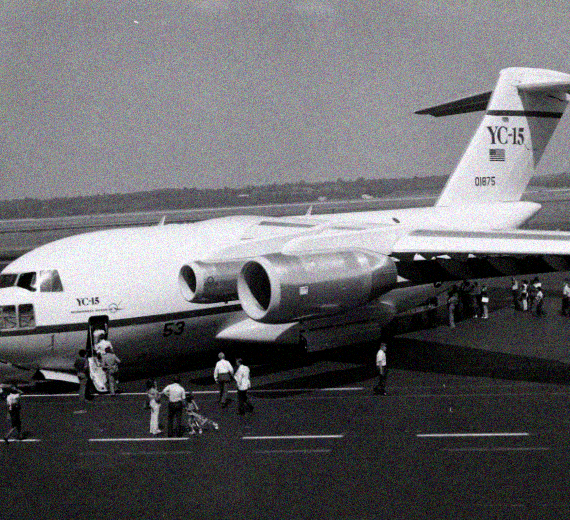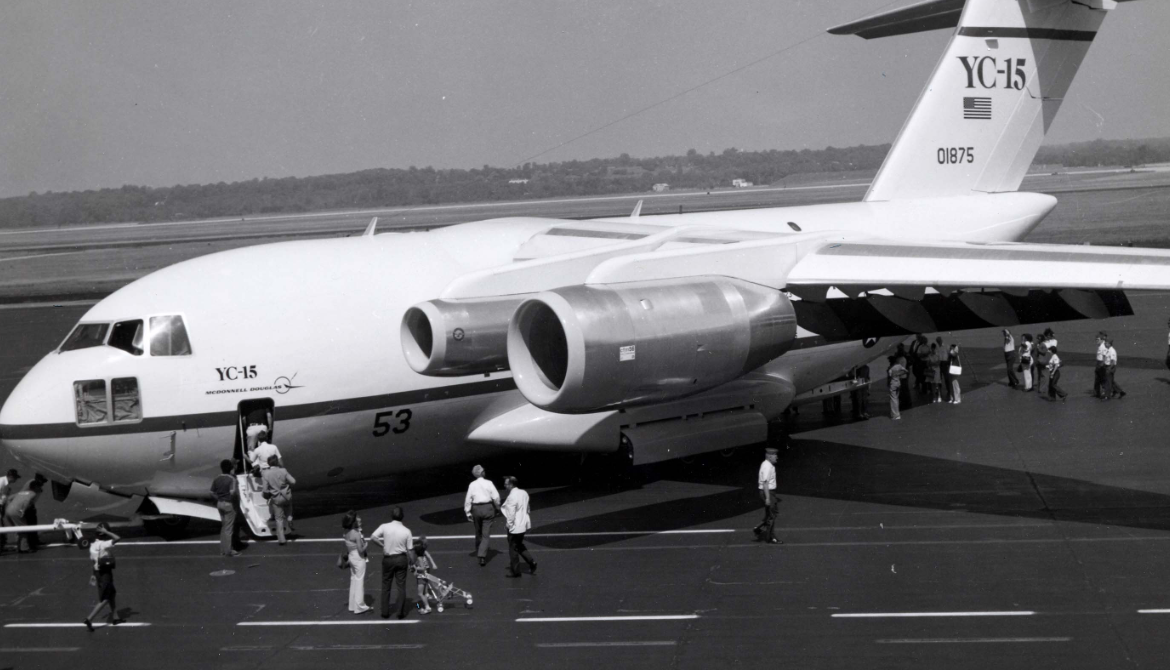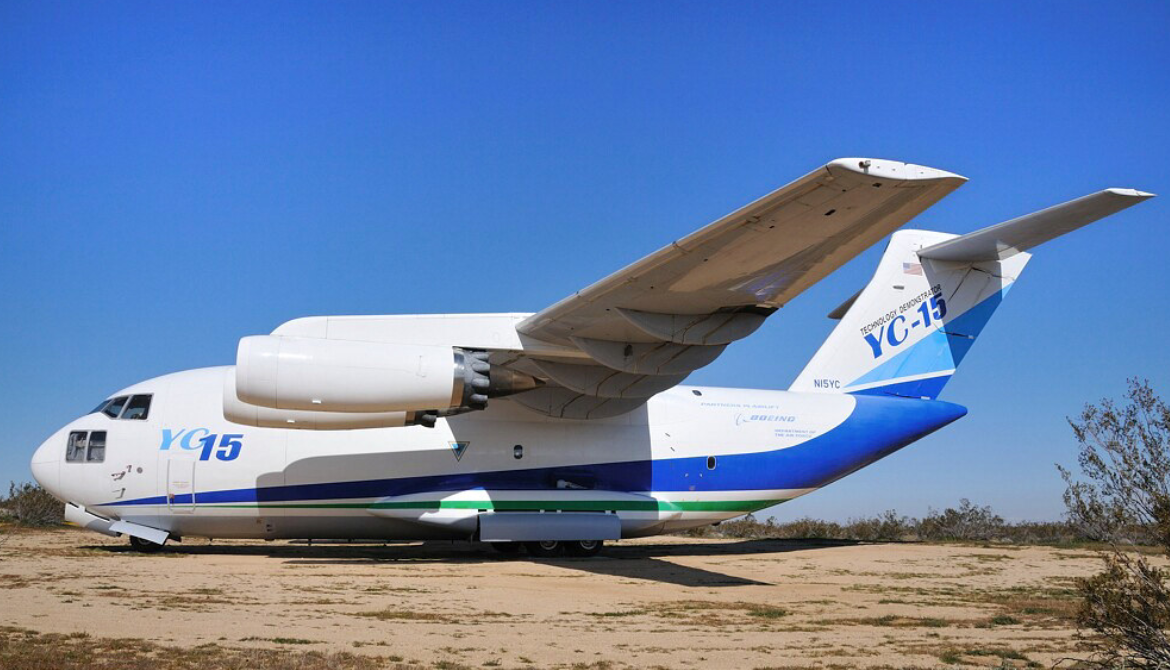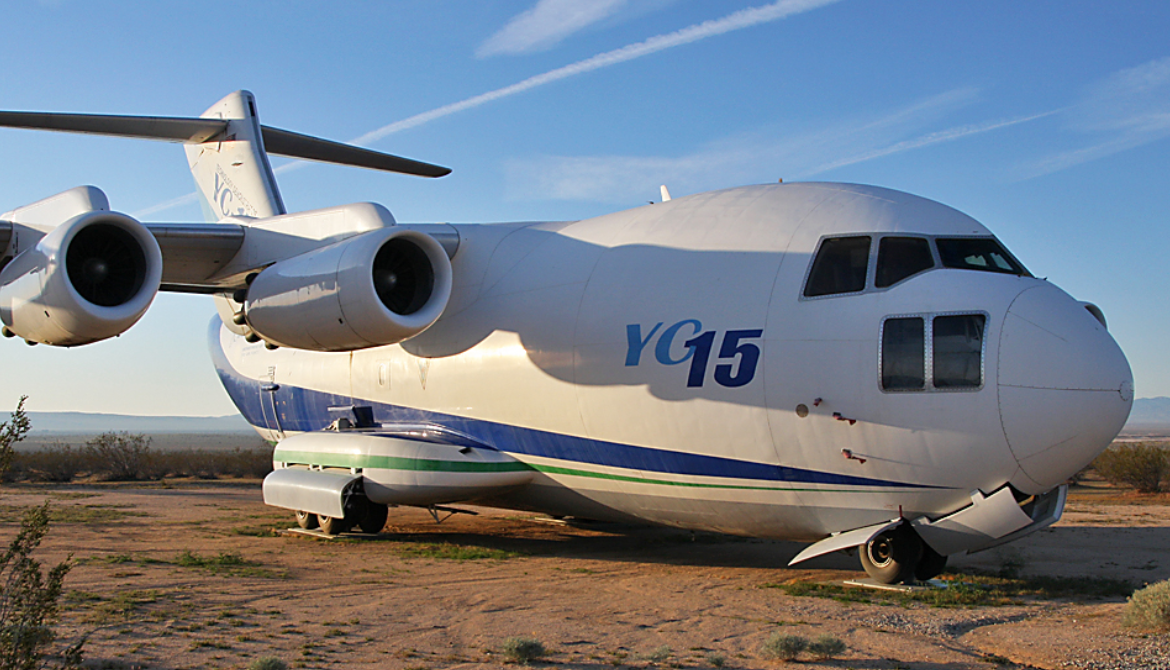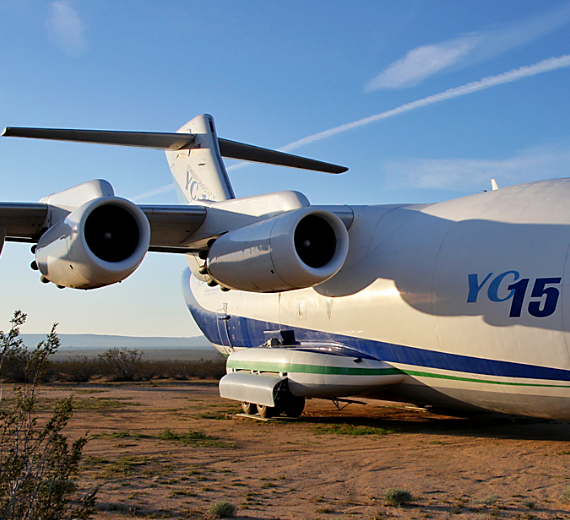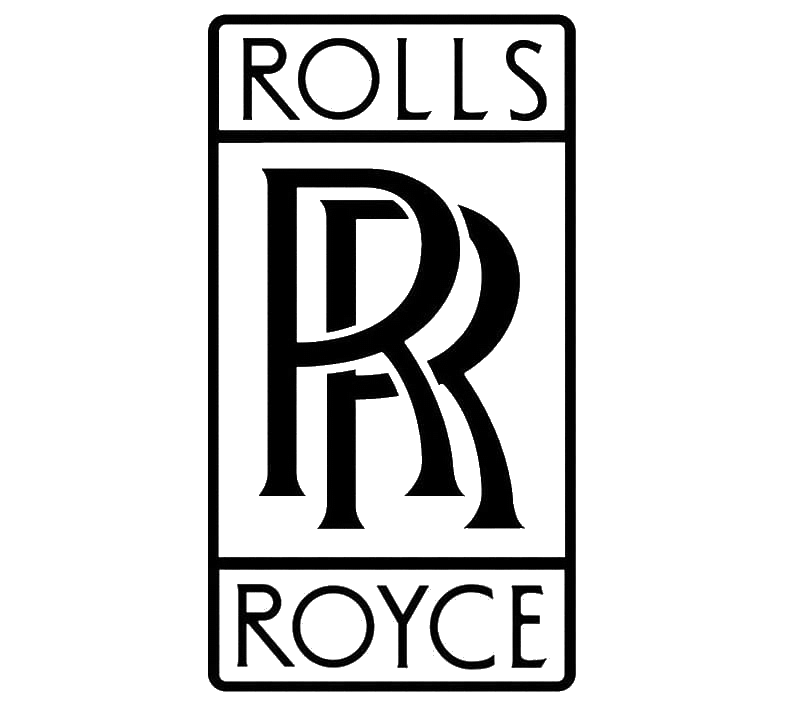Douglas
YC-15A Transport
Role Tactical airlifter
National origin United States
Manufacturer McDonnell Douglas
First flight 26 August 1975
Status Retired
Number built 2
Developed into Boeing C-17 Globemaster III
.
History
Douglas YC-15A (STOL) tactical transport.

The McDonnell Douglas YC-15 is a prototype four-engine short take-off and landing (STOL) tactical transport. It was McDonnell Douglas' entrant into the United States Air Force's Advanced Medium STOL Transport (AMST) competition to replace the Lockheed C-130 Hercules as the USAF's standard STOL tactical transport. In the end, neither the YC-15 nor the Boeing YC-14 was ordered into production, although the YC-15's basic design would be used to form the successful McDonnell Douglas (later Boeing) C-17 Globemaster III.
In 1968, the USAF started work on a series of prototype proposals, which would lead to both the AMST project and the Light Weight Fighter. The official Request for proposal (RFP) was issued in January 1972, asking for operations into a 2,000-foot (610 m) semi-prepared field with a 27,000-pound (12,000 kg) payload and a 400-nautical-mile (460 mi; 740 km) mission radius.[1] For comparison, the C-130 of that era required about 4,000 feet (1,200 m) for this load. Proposals were submitted by Bell, Boeing, Fairchild, McDonnell Douglas and the Lockheed/North American Rockwell team at this stage of the competition. On 10 November 1972, the two top bids (from Boeing and McDonnell Douglas) were selected. The companies were awarded development contracts for two prototypes each. McDonnell Douglas' prototype was designated YC-15.
For the YC-15, four engines were used, versions of the Pratt & Whitney JT8D-17 widely used on the Boeing 727 and Douglas DC-9. The YC-15 borrowed components from other McDonnell Douglas aircraft, with its nose gear coming from the Douglas DC-8 and the nose section and cockpit being derived from the Douglas DC-10. Parts borrowed from other aircraft included the Universal Aerial Refueling Receptacle Slipway Installation (UARRSI), taken from a Fairchild A-10, anti-tipover stabilizer struts from the Lockheed C-141 Starlifter, pumps taken from the McDonnell Douglas F-15 Eagle, Lockheed C-5 Galaxy, DC-9 and C-141 and actuators taken from the C-5 Galaxy and DC-10. In addition, the environmental cooling system was composed of components taken from the DC-9, C-141 and Boeing KC-135.
The YC-15 interior cargo hold was large, with dimensions 47 x 11.8 x 11.4 feet.
The YC-15 was the first aircraft to offer pilots a heads up display. It was especially designed to help with short field landings, showing the pilot the horizon, flight path scale, airspeed indexer and touchdown point.0
KmCeiling
0
KmCombat RANGE
0
Km/hAircraft Speed
0
Max Crew
Photo Gallery
YC-15A (STOL) tactical transport.


Douglas YC-15A (STOL) tactical transport.
General Info
-
-
- Crew: 3
- Capacity: Up to 150 troops or 78,000 lb (35,000 kg) of cargo
- Length: 124 ft 3 in (37.9 m)
- Wingspan: 110 ft 3 in or 132 ft 7 in (33.6 or 40.4 m)
- Height: 43 ft 4 in (13.2 m)
-
Powerplant
-
- Wing area: 1,740 sq ft (160 m2)
- Empty weight: 105,000 lb (47,600 kg)
- Max takeoff weight: 216,680 lb (98,285 kg)
- Powerplant: 4 × Pratt & Whitney JT8D-17 turbofans, 16,000 lbf (71 kN) thrust each
-
-
-
Performance
- Maximum speed: 590 mph (950 km/h, 510 kn)
- Cruise speed: 543 mph (872 km/h, 471 kn)
- Range: 2,995 mi (4,800 km, 2,600 nmi) with a 38,000-pound (17,000 kg) payload
- Service ceiling: 30,000 ft (9,100 m)
Aircraft of comparable Role
-
- Boeing C-17 Globemaster III
-
-
Aircraft of comparable role, configuration, and era
.
Links to Youtube & Others
Two YC-15s were built, one with a wingspan of 110 feet (34 m) (#72-1876) and one of 132 feet (40 m) (#72-1875). Both were 124 feet (38 m) long and powered by four Pratt & Whitney JT8D-17 engines, each with 15,500 pounds-force (69,000 N) of thrust.
YC-15 (STOL) tactical transport.
The YC-15 met specifications under most, but not all, conditions. It was a very good STOL plane for its size. At a gross weight of 149,300lbs,
Youtube Link
After the flight test program, the two aircraft were stored at the AMARC, located at Davis-Monthan Air Force Base. One aircraft (72-1875)
